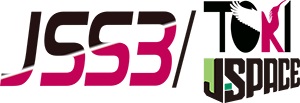Numerical Simulation of Rocket Turbopumps
JAXA Supercomputer System Annual Report February 2022-January 2023
Report Number: R22EG3214
Subject Category: Research and Development
- Responsible Representative: Taro Shimizu, Research and Development Directorate, Research Unit III
- Contact Information: Satoshi Ukai(ukai.satoshi@jaxa.jp)
- Members: Hiroaki Amakawa, Yu Daimon, Taroh Fukuda, Hironori Fujiwara, Osamu Fukasawa, Ashvin Hosangadi, Hideyo Negishi, Takenori Nakajima, Yoichi Ohnishi, Shinji Ohno, Masashi Toyama, Satoshi Ukai, Keita Yamamoto, Andrea Zambon
Abstract
Turbopumps are still one of key components in liquid rocket engine development in terms of cost, time, and risks. Furthermore, a turbopump itself is a complex system consisting of sub-components such as pump, turbine, bearing, balance piston, sealing and so on. From numerical simulation technology point of view, there is no technology able to evaluate performance of an entire turbopump system in the world. And also, accuracy and fidelity of numerical simulation technology for sub-components are still poor and cannot be used to reduce the number of experiments. Therefore, experiments are indispensable to evalute feasibility of considered design in engine development.
In this study, numerical simulation technology of an entire turbopump system able to be applicable in engine design phase has been developed enhancing accuracy and fedelity. We are aiming at reducing cost and time for future engine development by making full use of our numerical simulation to reduce the number of experiments. And also, innovative design methodology for higher performance rocket turbopumps has been investigated by using our numerical simulations.
Reference URL
Please refer to https://stage.tksc.jaxa.jp/jedi/simul/index.html .
Reasons and benefits of using JAXA Supercomputer System
In this study, JSS3 has been used because of the following reasons:
(1) To make it possible to perform large-scale numerical simulations with high accuracy and fidelity
(2) To produce a lot of computed results on time within limited short period of time under JAXA’s rocket development
(3) To ensure information security about rocket-related technical information in JAXA’s network only
Achievements of the Year
In the fiscal year 2022, we start to construct methodology to simulate unsteady phenomena that could potentially be a critical problem while designing turbopomps.
Regarding turbines, since flutter is appeared to be a key issue for LE-9, a simulation of flutter based on a one-way fluid-structure coupling is attempted. In addition, to improve predictions of unsteady flows within turbines, elemental tests are conducted, and verification analysis is performed.
For pumps, a one-dimensional prediction model of cavitation surge is developed by utilizing CFD results (Figure 1) for cavitation instability phenomena, which can be a problem in a wide range of rocket engine operations. As a result, it is confirmed that the surge frequency could be predicted accurately (Figure 2). In addition, a trial of large-scale detailed pump CFD analysis is started to capture unsteady phenomena.
The developed numerical simulation approach has been employed in the booster engine LE-9 development of H3 launch vehicle and CALLISTO RSR2 engine.

Fig.1: Comparison of cavitation visualization results and CFD cavitation region (isosurface with void fraction of 0.1)
Publications
– Peer-reviewed papers
K. Yamamoto, S. Ukai, O. Fukasawa, T. Fukuda, and H. Negishi, “NUMERICAL INVESTIGATION AT NOMINAL AND OFF-DESIGN OPERATIONS OF A SUPERSONIC TURBINE FOR LIQUID ROCKET ENGINES WITH FULL AND PARTIAL ADMISSION NOZZLES”, 2022, ASME TurboExpo 2022, GT2022-82348
DOI: https://doi.org/10.1115/GT2022-82348
– Invited Presentations
K. Yamamoto, Introduction of numerical simulations for supersonic turbines in rocket engines using CRUNCH CFD, 2022, VINAS Online Users Conference 2022
URL: https://www.vinas.com/ugm2022/program.html#day2
– Oral Presentations
K. Yamamoto, S. Ukai, T.Fukuda, S. Kawasaki, and H. Negishi, “Establishment of prediction model for cavitation surge frequency and onset in an inducer considering dynamic characteristics of cavitation compliance and mass flow gain factor”, 2022, The 87th meeting of Turbomachinery Society of Japan
Usage of JSS
Computational Information
- Process Parallelization Methods: MPI
- Thread Parallelization Methods: FLAT
- Number of Processes: 4800 – 20160
- Elapsed Time per Case: 300 Hour(s)
JSS3 Resources Used
Fraction of Usage in Total Resources*1(%): 1.93
Details
Please refer to System Configuration of JSS3 for the system configuration and major specifications of JSS3.
| System Name | CPU Resources Used(Core x Hours) | Fraction of Usage*2(%) |
|---|---|---|
| TOKI-SORA | 50004991.44 | 2.18 |
| TOKI-ST | 166971.54 | 0.17 |
| TOKI-GP | 0.00 | 0.00 |
| TOKI-XM | 0.00 | 0.00 |
| TOKI-LM | 2.84 | 0.00 |
| TOKI-TST | 502582.03 | 13.24 |
| TOKI-TGP | 0.00 | 0.00 |
| TOKI-TLM | 1126.67 | 2.34 |
| File System Name | Storage Assigned(GiB) | Fraction of Usage*2(%) |
|---|---|---|
| /home | 492.46 | 0.45 |
| /data and /data2 | 136411.36 | 1.05 |
| /ssd | 4320.07 | 0.60 |
| Archiver Name | Storage Used(TiB) | Fraction of Usage*2(%) |
|---|---|---|
| J-SPACE | 20.01 | 0.09 |
*1: Fraction of Usage in Total Resources: Weighted average of three resource types (Computing, File System, and Archiver).
*2: Fraction of Usage:Percentage of usage relative to each resource used in one year.
ISV Software Licenses Used
| ISV Software Licenses Used(Hours) | Fraction of Usage*2(%) | |
|---|---|---|
| ISV Software Licenses(Total) | 2869.51 | 2.00 |
*2: Fraction of Usage:Percentage of usage relative to each resource used in one year.
JAXA Supercomputer System Annual Report February 2022-January 2023



